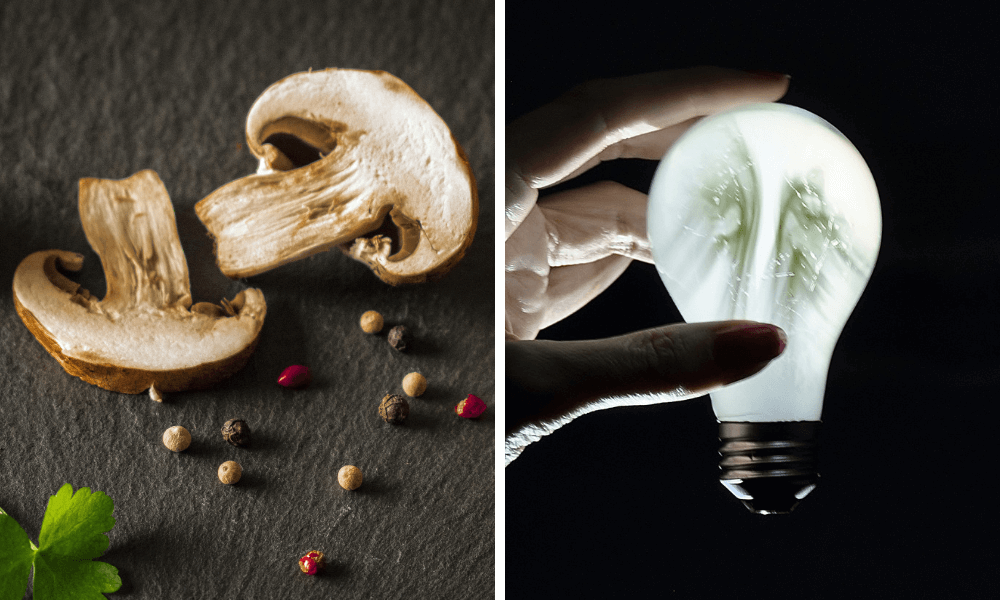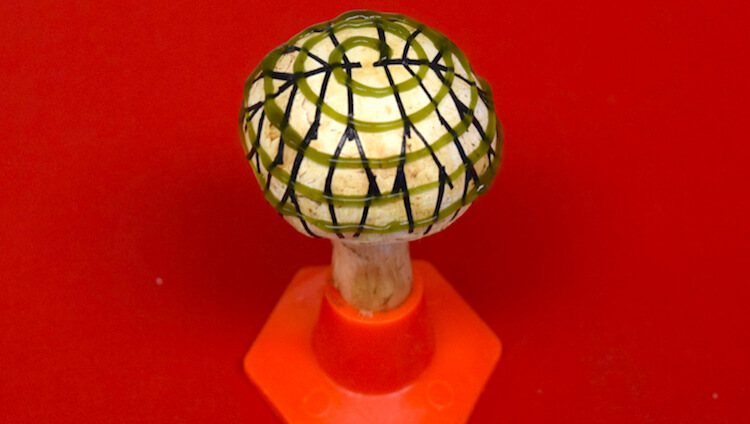Breaking news in conductive 3D printing: the Bionic Mushroom
Posted By Kat Plewa on Nov 14, 2018 | 0 comments
Conductive 3D printing might seem like old news, as we already talked about how it can help to build electronic devices and electrical circuits in the future. We also wrote about hydroprinting and even MIT’s invention of using colloids for Additive Manufacturing electrical elements! But don’t let it mislead you, there is still so much more to discover! What’s next?
In this blog post, we will show you how the inherent properties of some materials found in nature also make them electrically conductive. Combining these characteristics can bring a new revolution in producing electronic devices. Let’s find out what is it about mushrooms and 3D printing technology that can be so interesting for the scientists to produce electrical elements.
Electricity-producing mushrooms: fiction or reality?
Next time you’re having mushroom risotto or pizza, think twice about the potential of those delicious ingredients. That’s exactly what happened to Sudeep Joshi, co-author of research conducted at the Stevens Institute of Technology in Hoboken, New Jersey. While having lunch, the scientists realized mushrooms are the perfect solution for their study on conductive materials.
They were already familiar with cyanobacteria, a well-known bacteria which produces small joints of electricity form light, like plants during photosynthesis. However, bioengineers were facing one problem: it’s hard to keep it alive in an artificial environment. And here comes the role of just some ordinary looking mushrooms we can all find in the supermarket.
The energy producing bacteria
Thanks to Additive Manufacturing the researchers were able to use cyanobacteria as a 3D printing filament and 3D print it onto the cap of the mushroom. The fungi play the key role here: they support the bacteria by providing it with the proper pH levels, temperature, shelter, nutrients, and moisture. Additive Manufacturing gave the researchers the ability to use those properties of the mushroom.
Joshi commented “The mushrooms essentially serve as a suitable environmental substrate with the advanced functionality of nourishing the energy-producing cyanobacteria. We showed for the first time that a hybrid system can incorporate an artificial collaboration, or engineered symbiosis, between two different microbiological kingdoms”.
The scientists tested several options for the 3D printed cyanobacteria to survive: a dead mushroom and silicon one, but the winner was a regular white button mushroom. It already has rich microbiota, which is an “ecological community of commensal, symbiotic and pathogenic microorganism found in and on all multicellular organisms studied to date from plants to animals’’. That makes mushrooms perfect to host cyanobacteria, after it was 3D printed, and to keep the bacteria’s electrically conductive properties.
On the picture shown below the green spiral curve is cyanobacteria and the black lines are the conductive graphene.
Scientists also found out that 3D printed cyanobacteria not only lives longer on mushrooms but can also produce different amounts of electricity depending on the alignment and density of the spiral. However, none of it would be possible without 3D printing.
Thanks to Additive Manufacturing technologies the researchers were able to 3D print thin, electrically conductive structures, impossible to achieve with any other method. But how do we capture the electricity from the bacteria?
The king of conductive 3D printing: Graphene
We talked about Graphene on multiple occasions as it’s the world’s lightest and strongest material, but not only that, it is also electrically conductive. Graphene is revolutionizing conductive 3D printing giving the scientists endless possibilities to create absolutely new solutions for electronic devices.
In this particular case, Graphene is used as an electrically conductive ink containing nanoribbons. Conductive graphene is 3D printed on top of the mushroom’s cap in a branched network. Then the bacteria is used as a 3D printing filament to create the spiral shape. In the connecting points, Graphene accesses the electrical signals cyanobacteria produces.
An assistant professor at Stevens Institute of Technology, Manu Mannoor explains the importance of this development: “In this case, our system- this bionic mushroom- produces electricity. By integrating cyanobacteria that can produce electricity, with nanoscale materials capable of collecting the current, we were able to better access the unique properties of both, augment them, and create an entirely new functional bionic system”.
What’s the future of Bionic Mushrooms?
“With this work, we can imagine enormous opportunities for next-generation bio-hybrid applications. For example, some bacteria can glow, while others sense toxins or produce fuel,” Mannoor said. Sounds unbelievable? He adds that “By seamlessly integrating these microbes with nanomaterials, we could potentially realize many other amazing designer bio-hybrids for the environment, defense, healthcare, and many other fields”.
If you have a 3D printed project in mind, either a mushroom or more engineering parts, don’t wait any longer. Simply upload your files to our online 3D printing service and improve your production with Additive Manufacturing today!
And don’t forget to subscribe to our Newsletter and follow us on LinkedIn for the latest 3D printing news!


 Connect with Google
Connect with Google Connect with Facebook
Connect with Facebook
